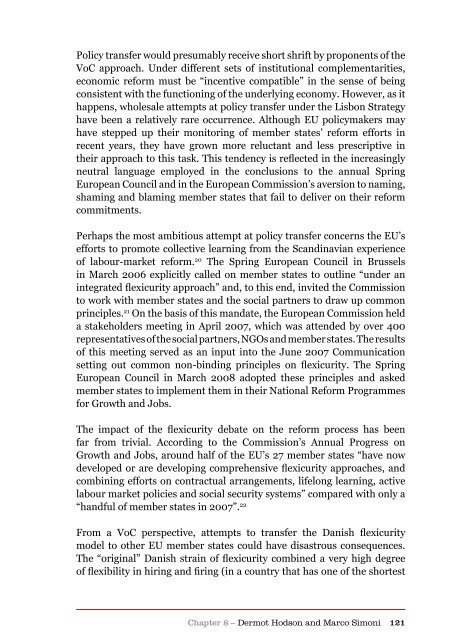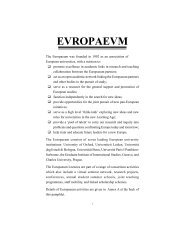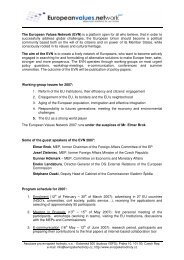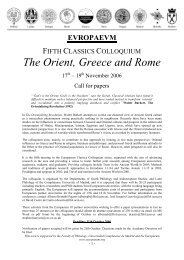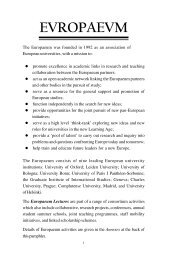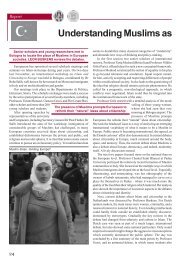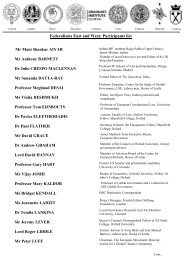Authors Iain Begg | Gabriel Glöckler | Anke Hassel ... - The Europaeum
Authors Iain Begg | Gabriel Glöckler | Anke Hassel ... - The Europaeum
Authors Iain Begg | Gabriel Glöckler | Anke Hassel ... - The Europaeum
Create successful ePaper yourself
Turn your PDF publications into a flip-book with our unique Google optimized e-Paper software.
Policy transfer would presumably receive short shrift by proponents of the<br />
VoC approach. Under different sets of institutional complementarities,<br />
economic reform must be “incentive compatible” in the sense of being<br />
consistent with the functioning of the underlying economy. However, as it<br />
happens, wholesale attempts at policy transfer under the Lisbon Strategy<br />
have been a relatively rare occurrence. Although EU policymakers may<br />
have stepped up their monitoring of member states’ reform efforts in<br />
recent years, they have grown more reluctant and less prescriptive in<br />
their approach to this task. This tendency is reflected in the increasingly<br />
neutral language employed in the conclusions to the annual Spring<br />
European Council and in the European Commission’s aversion to naming,<br />
shaming and blaming member states that fail to deliver on their reform<br />
commitments.<br />
Perhaps the most ambitious attempt at policy transfer concerns the EU’s<br />
efforts to promote collective learning from the Scandinavian experience<br />
of labour-market reform. 20 <strong>The</strong> Spring European Council in Brussels<br />
in March 2006 explicitly called on member states to outline “under an<br />
integrated flexicurity approach” and, to this end, invited the Commission<br />
to work with member states and the social partners to draw up common<br />
principles. 21 On the basis of this mandate, the European Commission held<br />
a stakeholders meeting in April 2007, which was attended by over 400<br />
representatives of the social partners, NGOs and member states. <strong>The</strong> results<br />
of this meeting served as an input into the June 2007 Communication<br />
setting out common non-binding principles on flexicurity. <strong>The</strong> Spring<br />
European Council in March 2008 adopted these principles and asked<br />
member states to implement them in their National Reform Programmes<br />
for Growth and Jobs.<br />
<strong>The</strong> impact of the flexicurity debate on the reform process has been<br />
far from trivial. According to the Commission’s Annual Progress on<br />
Growth and Jobs, around half of the EU’s 27 member states “have now<br />
developed or are developing comprehensive flexicurity approaches, and<br />
combining efforts on contractual arrangements, lifelong learning, active<br />
labour market policies and social security systems” compared with only a<br />
“handful of member states in 2007”. 22<br />
From a VoC perspective, attempts to transfer the Danish flexicurity<br />
model to other EU member states could have disastrous consequences.<br />
<strong>The</strong> “original” Danish strain of flexicurity combined a very high degree<br />
of flexibility in hiring and firing (in a country that has one of the shortest<br />
Chapter 8 – Dermot Hodson and Marco Simoni 121


